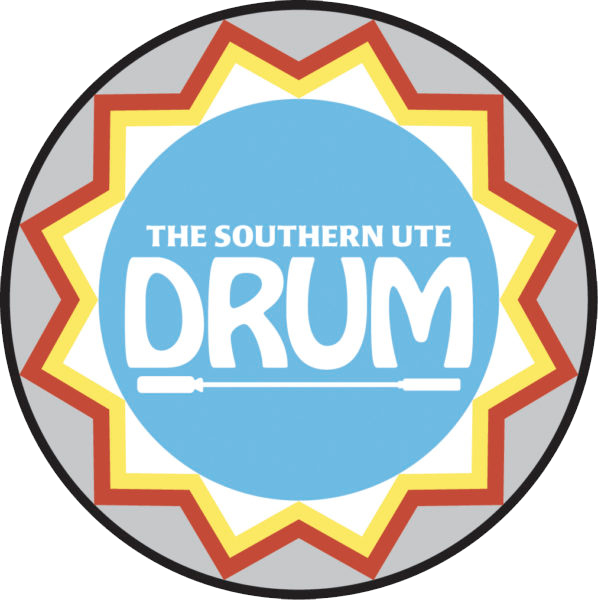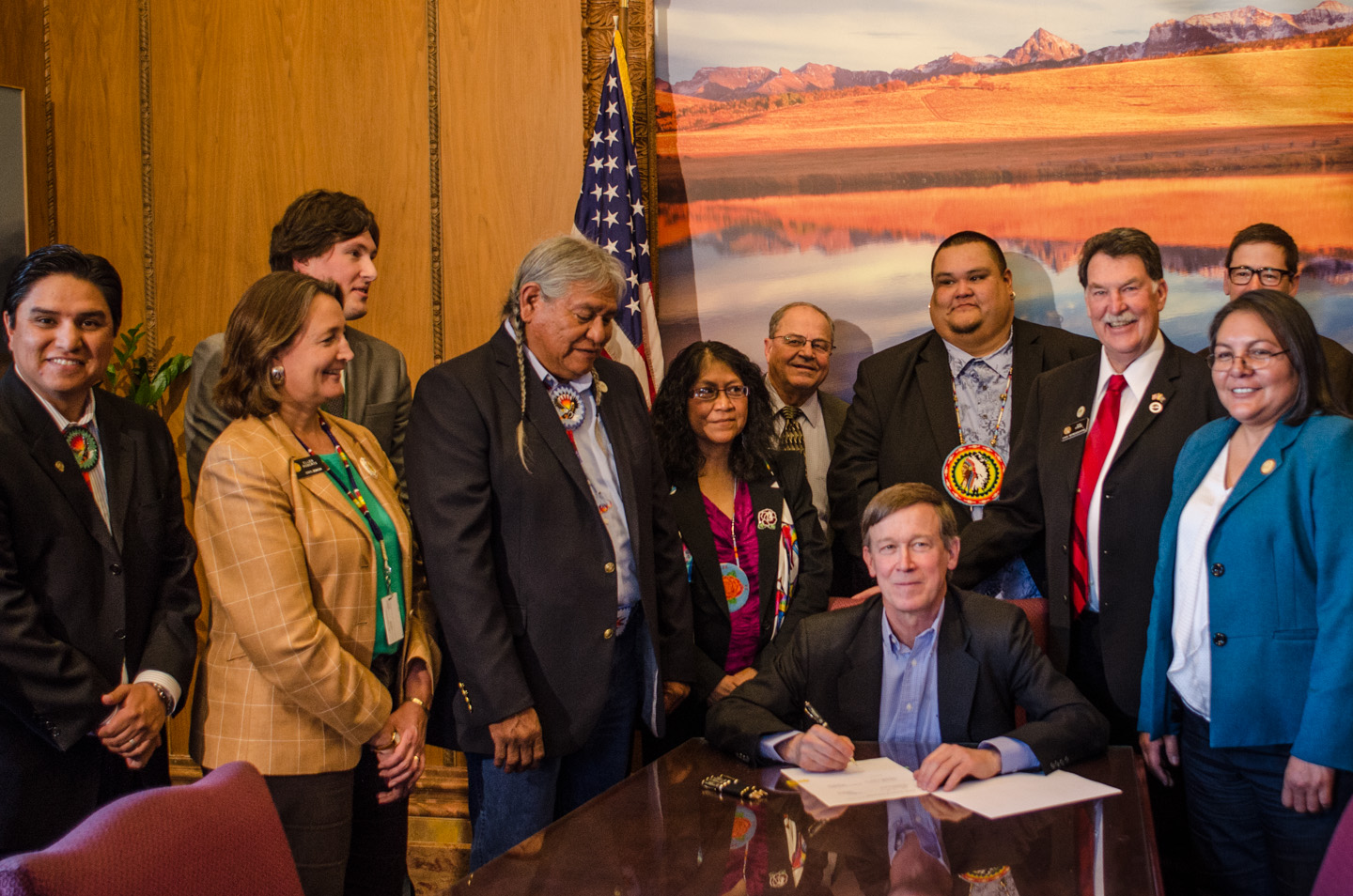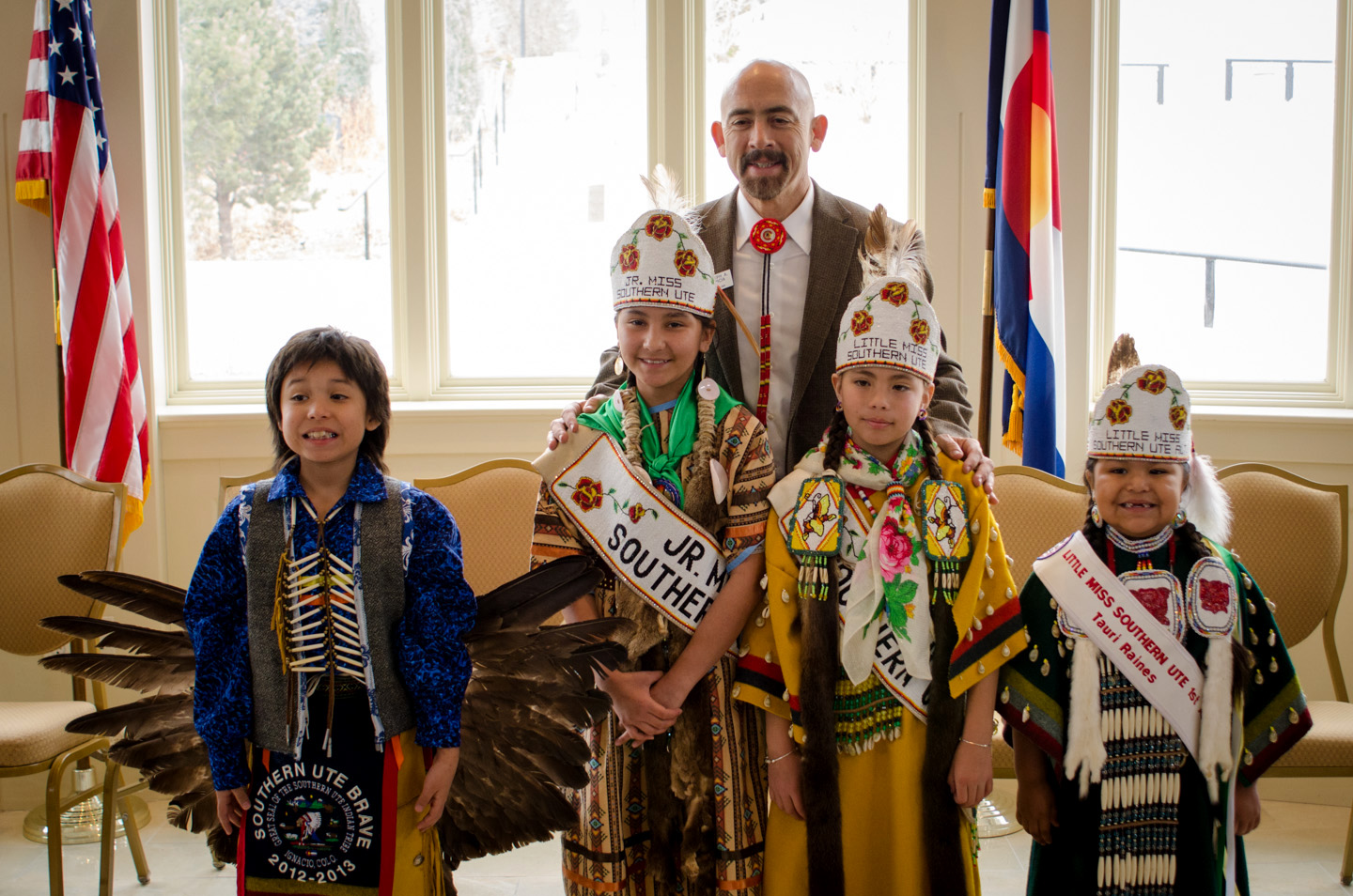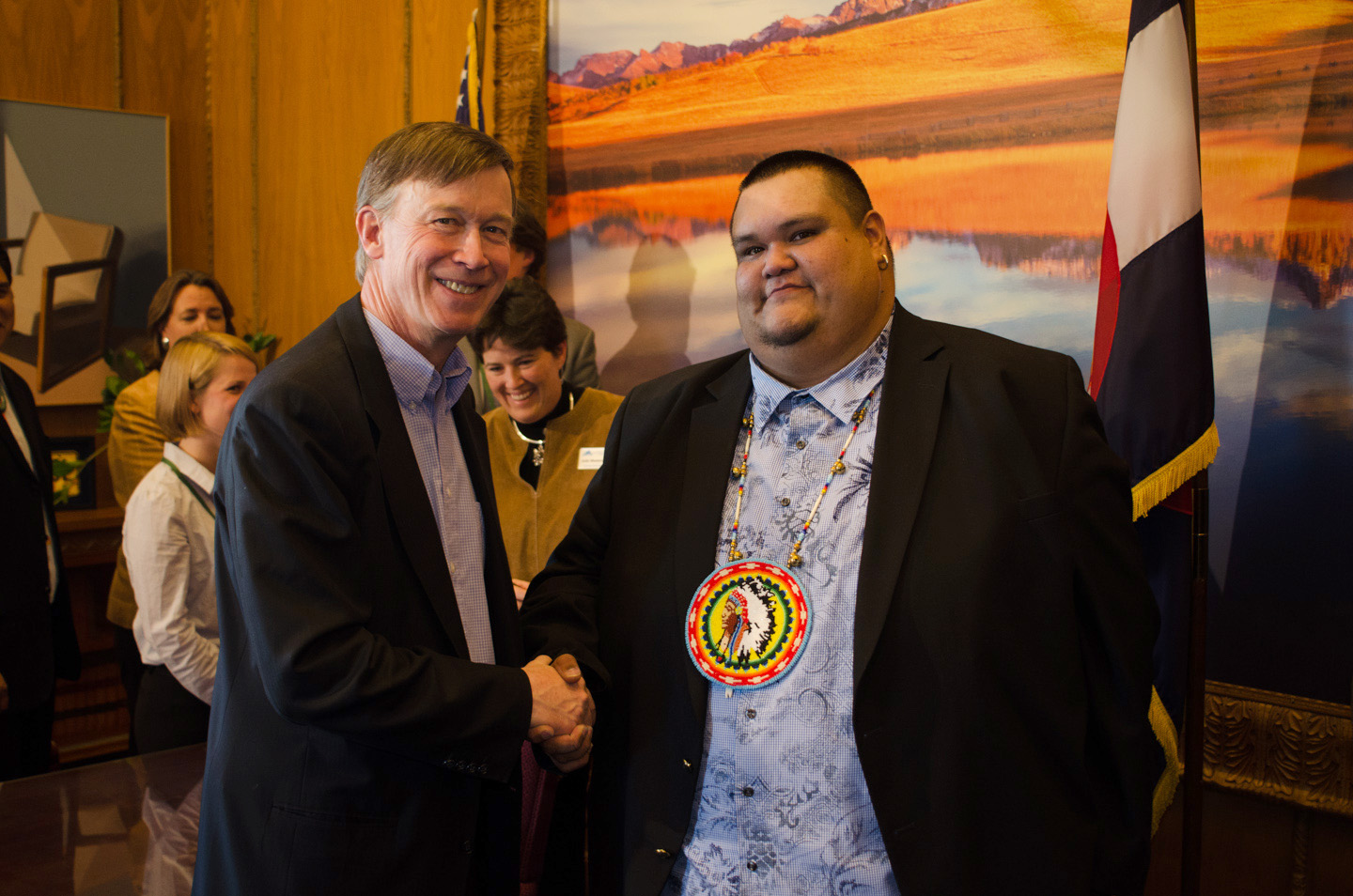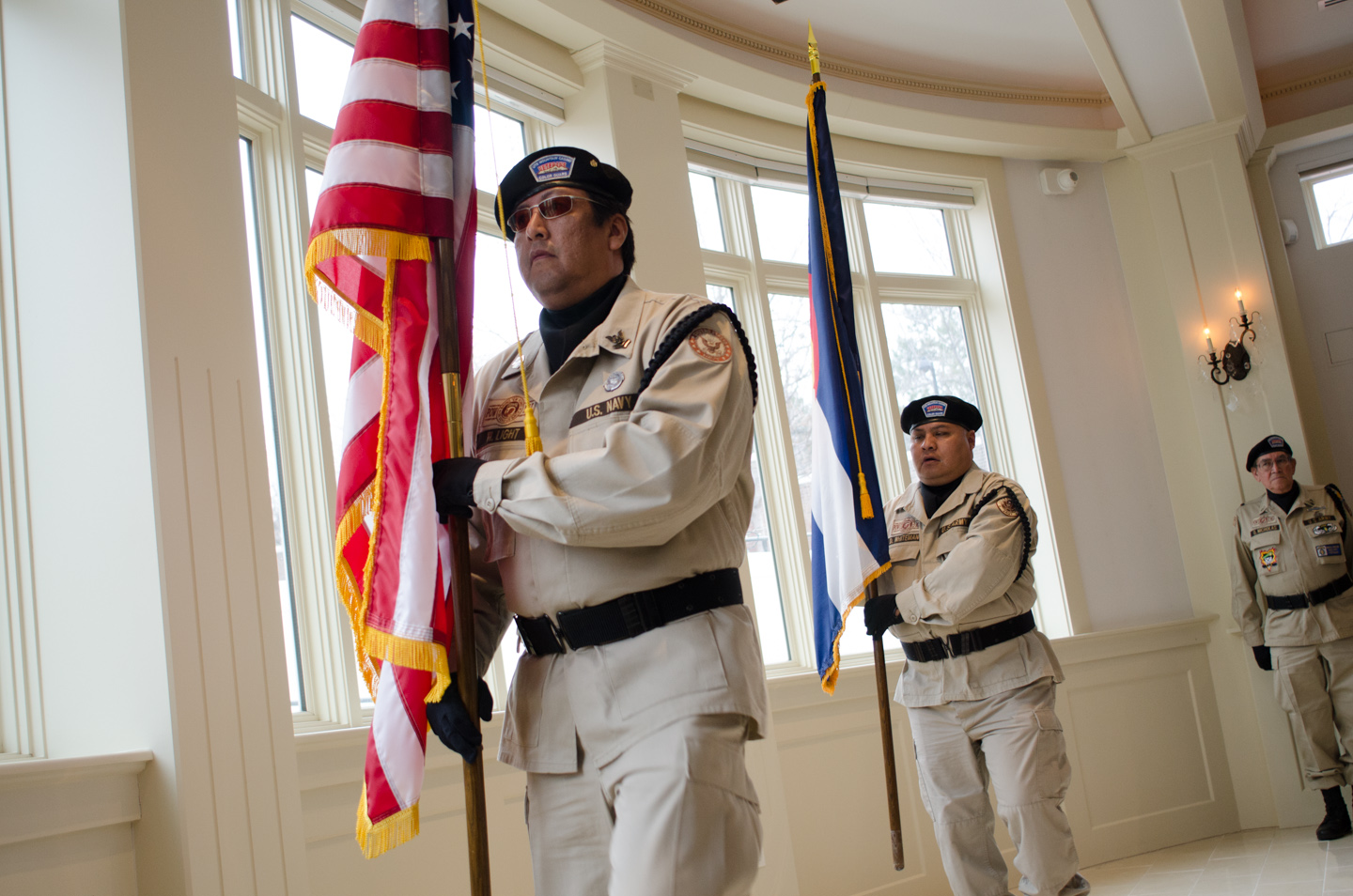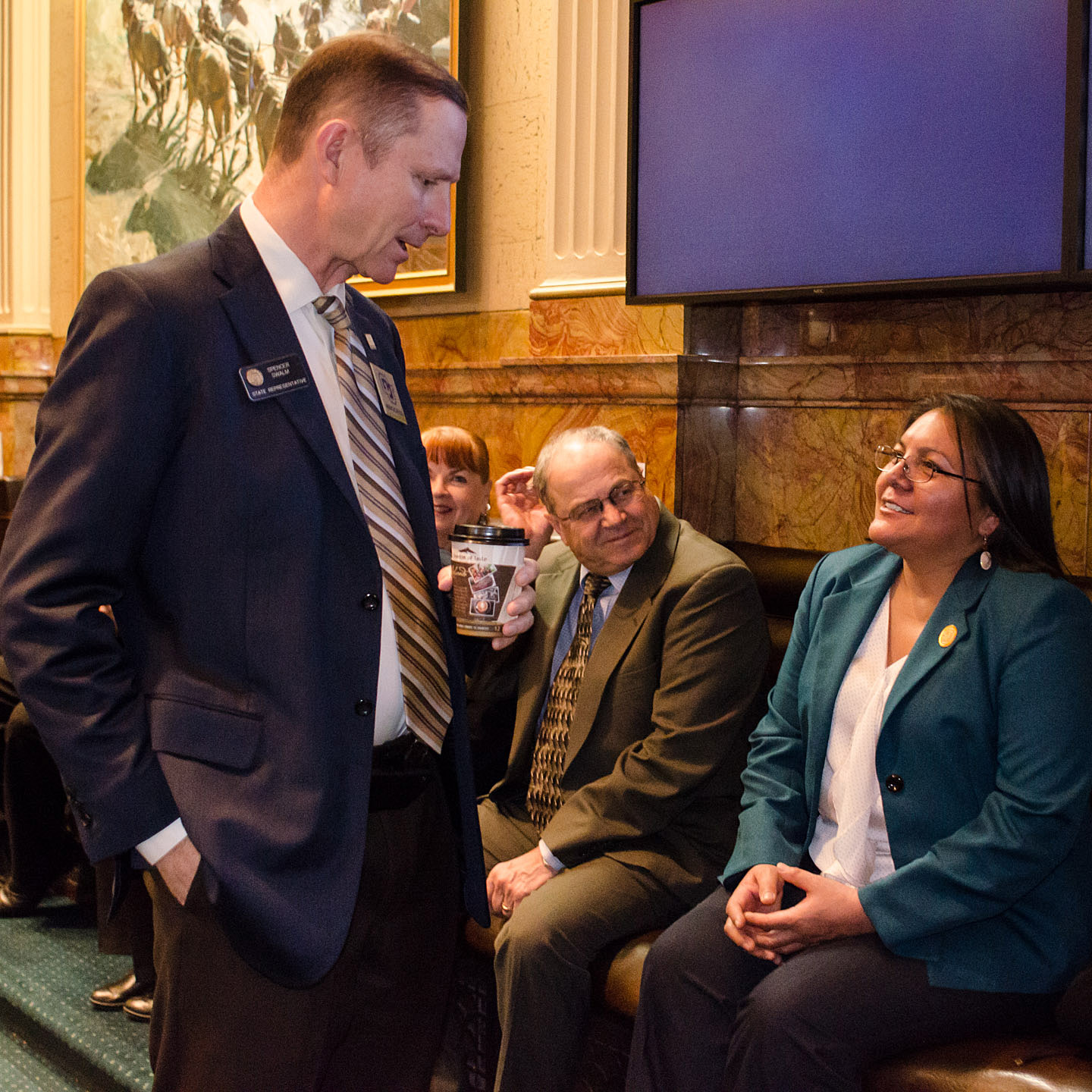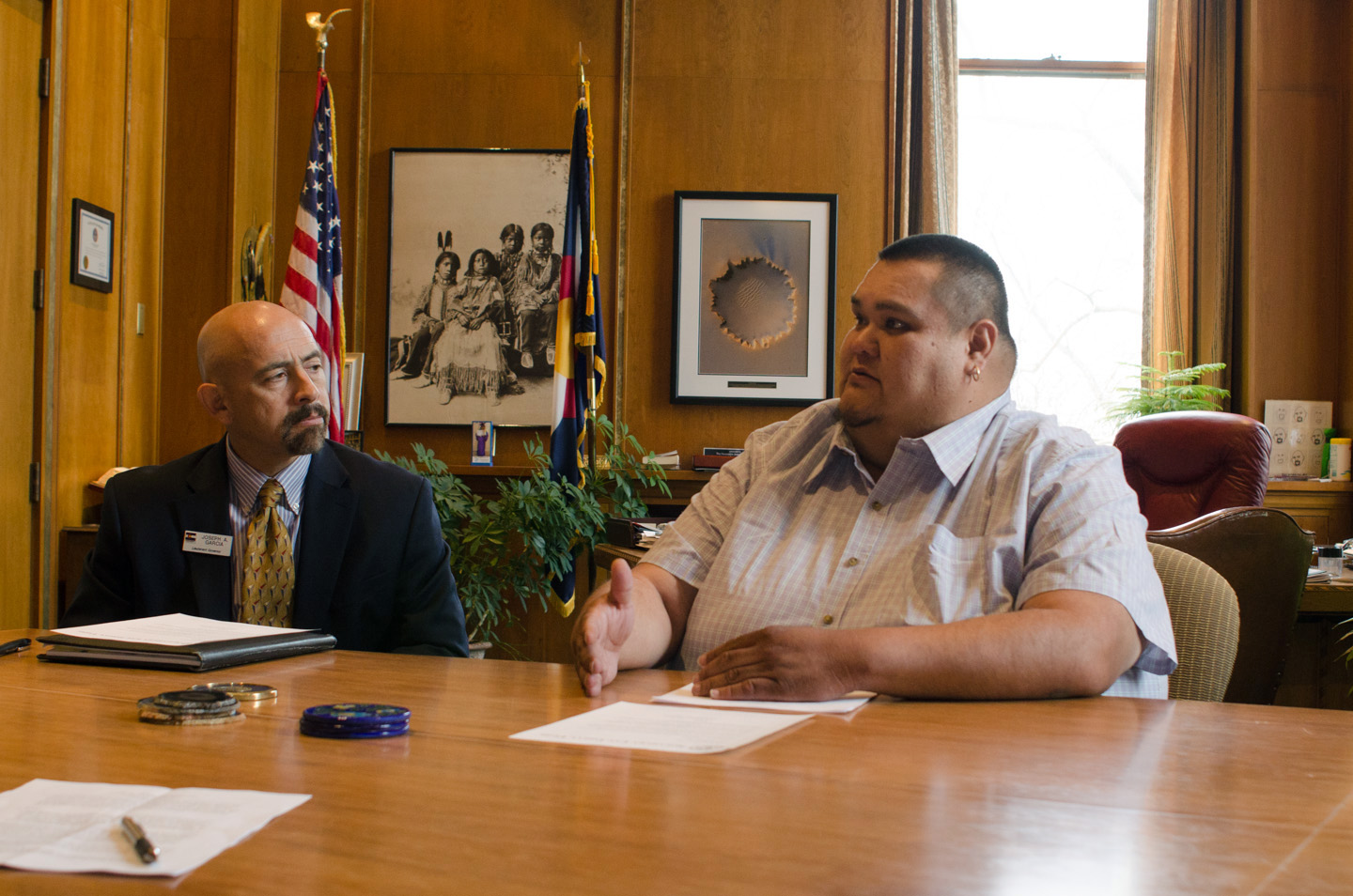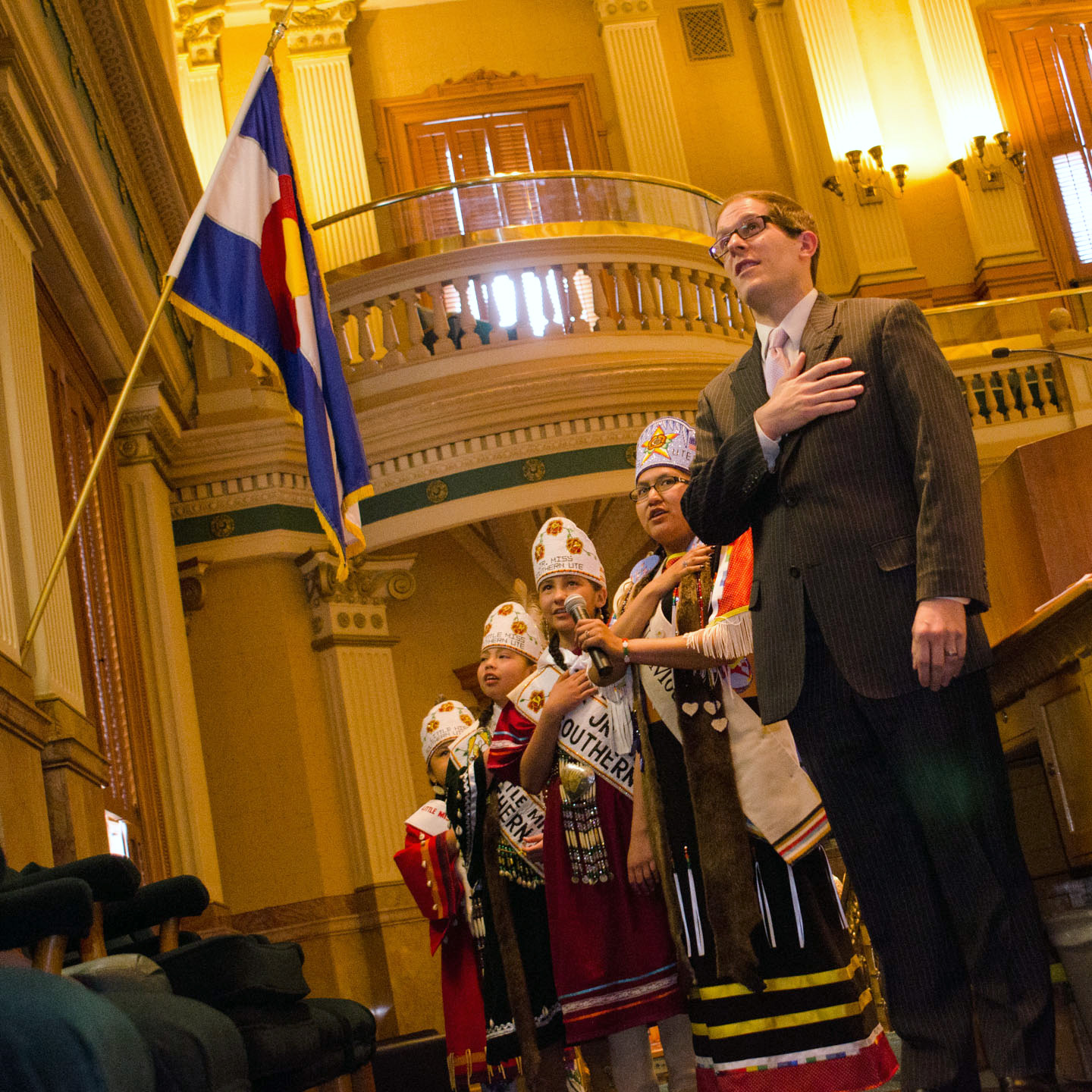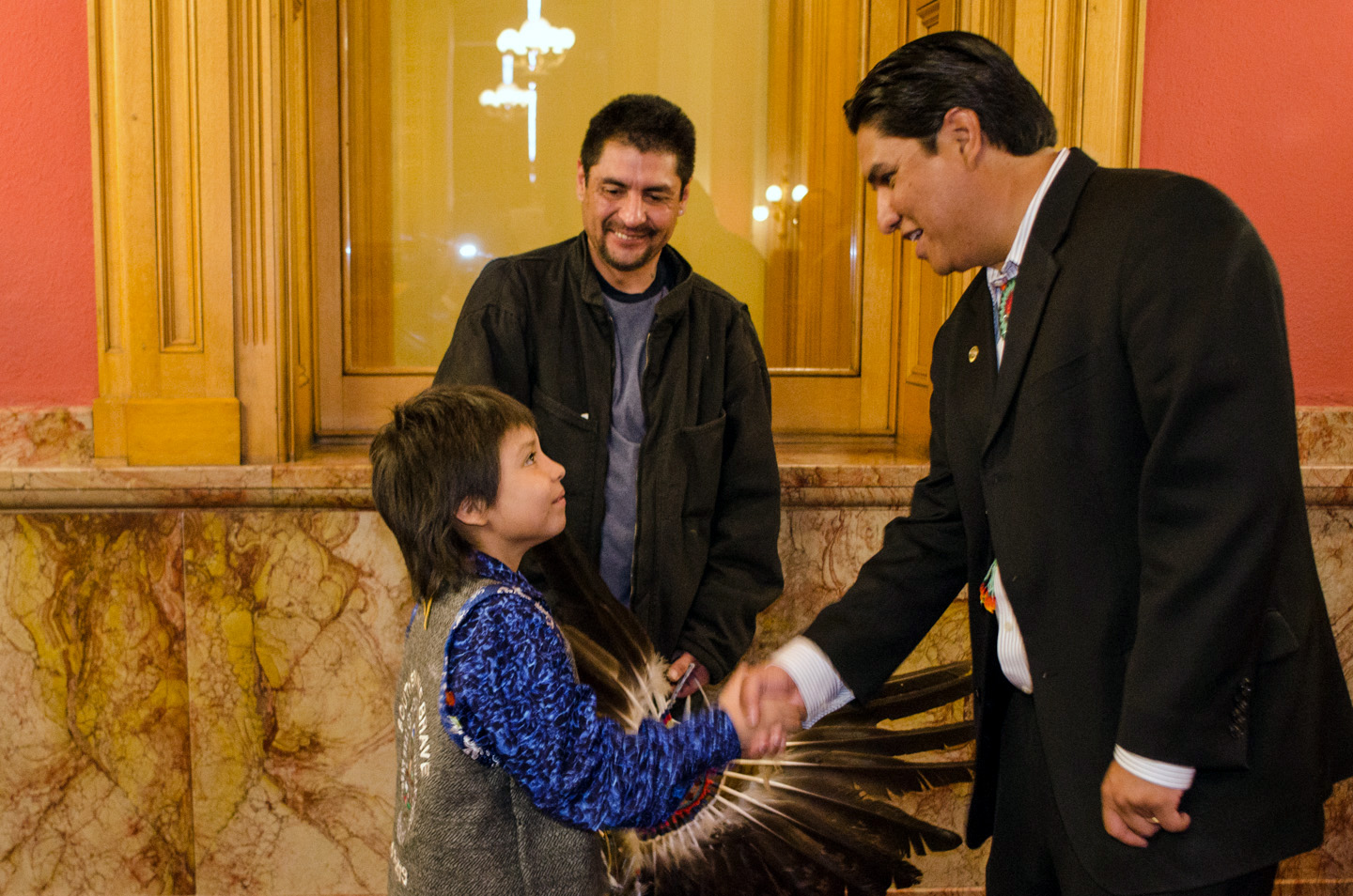Colorado state, tribal governments convene in Capitol






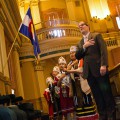


Leaders of the Ute Mountain Ute and Southern Ute Indian tribes convened with Colorado Lt. Gov. Joe Garcia at the governor’s mansion on Thursday, March 21 for a Colorado Commission of Indian Affairs quarterly meeting, kicking off two days of government-to-government events in Denver.
Included on the agenda for the week was the signing of state House Bill 13-1198 — An Act Concerning the Colorado Commission of Indian Affairs — by Gov. John Hickenlooper, a welcome by Ute royalty in the state House of Representatives, and a closed session with Southern Ute tribal leaders and the governor.
CCIA discusses energy, health, federal funding
Ute Mountain Ute tribal delegates Bradley Height and Juanita Plenty Holes discussed the possibility of pursuing renewable energy development, looking to Southern Ute as an example of successful enterprise.
Making considerations for drought was also a key point given the light snowpack throughout the region.
Speaking on behalf of the Southern Ute Indian tribe, Council Lady Pathimi Goodtracks said a key focus is health care for tribal members.
“We are moving toward a more tribally centered approach,” she said.
Goodtracks also touched on the Animas-La Plata Project, in which the tribe’s involvement is ongoing. The question of recreation on Lake Nighthorse remains a topic of much interest, she said.
“We remain active in continuing to develop it,” she said.
Regarding tribal youth, Goodtracks congratulated Southern Ute tribal member Michelle Simmons on becoming this year’s Boys & Girls Club of the Southern Ute Indian Tribe Youth of the Year. Goodtracks also noted the success the club is having with their film, Keep it Sacred, regarding tobacco use.
Colorado Commission of Indian Affairs Executive Director Ernest House Jr. opened his remarks with President Obama’s recent signing of the Violence Against Woman Act, calling it a landmark case that “strengthens sovereignty and the whole process.”
House was also recently appointed to the Fort Lewis College board of trustees in Durango.
“Given the mission of Fort Lewis, we are very pleased that [House] he was willing to do it,” Garcia said. “He is held in such high regard by the tribes.”
Ignacio School District Superintendent Rocco Fuschetto, a member of the commission, spoke about the proposed Southern Ute Montessori Head Start building project and the construction planned for the area’s public schools.
“We appreciate the Southern Ute Tribe [and] Growth Fund,” Fuschetto said. “That collaboration has been great.”
With the recent occasion of the “sequester” — automatic budget cuts across the federal government — funding was a question on everyone’s mind.
“We definitely are not above the impact,” Goodtracks said. “We have to do our planning and get information out to the membership.”
Fuschetto echoed a similar sentiment.
“We really rely on that [funding],” he said.
Gov. Hickenlooper signs CCIA bill
The following day opened with Ute royalty members leading the state Legislature in the pledge of allegiance. Ute leaders and members of the commission then joined state legislators in Hickenlooper’s office for the signing of HB 13-1198.
The bill makes several minor changes to the Colorado Commission of Indian Affairs, including removing the $35-a-day compensation for commission members to attend meetings, increasing the length of at-large terms from one to three years, and enabling the commission to form committees as needed. The act also renames House’s position from executive secretary to executive director.
Following the signing, Goodtracks and Southern Ute Chairman Jimmy R. Newton Jr. joined Hickenlooper for a private meeting.
“We don’t have a lot of issues with the state,” Newton said, adding that the tribe is mostly seeking ongoing support from the state for its various projects. “The relationship between the state and the tribe is great and we want it to continue to be great.”
Newton thanked House for his work as a liaison between the state and tribes.
“CCIA is letting people know that there are two federally recognized tribes in Colorado,” he said, “to let people know who we are.”
Among those projects discussed was a proposed project to rework irrigation channels on reservation lands.
“[We want to] rehabilitate the system and get it back to a working state,” Newton said. “[This project] benefits the community. … The tribe is looking for broader support.”
Newton also asked for state support to manage recreation on Lake Nighthorse, part of the Animas-La Plata Project.
Hickenlooper expressed an interest in the possibility of a ceremony to honor those who died in the Sand Creek Massacre in 1864, when Colorado Territory militia reportedly killed more than 100 Native Americans, most of which were women and children.
“I support going back and examining the facts and not flinching,” Hickenlooper said.
